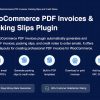If you belong to the financial services industry, you understand the significance of transparent, simplified, and compliant rules and techniques. Policies and processes permit businesses to align operations with strategic plans, match regulatory expectations, and foster a sense of responsibility and efficiency.
However, dealing with policies and procedures is often easier said than done. It may be a complicated and challenging endeavor to curate, update, imply, and enforce policies and techniques throughout the firm and ensure policies stay updated in times of flux and uncertainty, just like an insurance policy lifecycle management software program. This blog will explore the high-quality practices for enforcing insurance policy lifecycle management software to maximize benefits and ensure a clean transition.
What is Insurance Policy Lifecycle Management Software?
Insurance policy lifecycle management solution is an advanced technical program curated to automate and streamline the policy lifecycle process. This software provides a centralized platform for managing all aspects of policy, along with:
- Policy Issuance: Simplifying new coverage advent and citation processes.
- Underwriting: Streamlining threat assessment and approval workflows.
- Policy Servicing: Managing coverage adjustments, endorsements, and renewals.
- Claims Management: Facilitating efficient claims submission, processing, and price.
- Document Management: Centralized database and retrieval of all policy-related files.
- Reporting and Analytics: Generating reports and insights to improve policy management and business operations.
Best Practices Before Implementing Insurance Policy Lifecycle Management Software
1. Define clear objectives
Before installing this software, it is critical to establish clear objectives. Bring clarity for the goals you wish to achieve from the software, like increasing operational efficiency, reducing scope of mistakes, meeting customer expectations, and guaranteeing compliance. Putting up with brief goals will aid the installation process and assess the software’s effectiveness respectively.
2. Conduct a Thorough Needs Assessment
Conduct a thorough needs evaluation to determine your organization’s particular requirements. Evaluate your present policy management procedures, identify pain areas, and evaluate the features and functionalities required to overcome these issues. Engage key stakeholders, including underwriters, policy administrators, IT workers, and customer service representatives, to collect feedback and verify that the software satisfies everyone’s requirements.
3. Select the Right Software
Choosing appropriate IPLM software is important to the success of accurate deployment. Look for a solution that includes the capabilities and features referred to during evaluation. Consider factors like simplicity of use, scalability, integration opportunities, and vendor support. Selecting a software supplier with insurance industry-related information and a validated track record of effective deployment is wonderful.
4. Create an Implementation Plan
Create a detailed implementation plan consisting of the strategies, agenda, and assets required for the project. Assign roles and obligations to staff contributors and offer clear communication methods to keep everyone informed. The implementation approach must include essential milestones, including software program set-up, records migration, gadget configuration, checking out, schooling, and go-stay.
5. Ensure Data Accuracy and Integrity
Data accuracy and integrity are critical for successfully implementing the IPLM software program. Perform an intensive data audit to identify and clean up any inaccuracies, duplicates, or old data. Curate a data migration strategy to ensure that vital information is transferred to the new device accurately and securely. Implement data validation exams to maintain data quality throughout the implementation process.
6. Integrate with Existing Systems
To maximize the blessings of this software application, it is essential to combine it along with your current structures, consisting of CRM, claims management, and accounting software program. Integration guarantees seamless data workflow and eliminates the need for physical data entry, reducing the scope of errors and enhancing efficiency. Work with your IT crew and software program dealer to expand and check integration points to ensure clean interoperability.
7. Implement Strong Security Measures
Security is the highest priority when handling sensitive insurance policy data. Implement robust security measures to secure data from unwanted access, violations, and cyber attacks. These measures comprise data encryption, user identification, access limitations, and periodic security audits. Ensure that the software complies with industry requirements and best practices for data security.
8. Perform Rigorous Testing
Rigorous checking out is essential to identifying and coping with any troubles before the software program stays. Develop a comprehensive testing plan comprising functional, integration, performance, and user acceptance testing. Test the software in a restricted environment to ensure it matches your requirements and performs as expected. Address any bugs or issues right away to ensure a clean launch.
9. Monitor and Evaluate Performance
After launching the software program, continuously monitor and compare its overall performance to ensure it meets your objectives. Track critical overall performance indicators (KPIs), including processing times, error fees, customer satisfaction, and compliance metrics. Gather review from users and stakeholders to identify areas for improvement. Regularly evaluate and replace the software to address issues and leverage new capabilities and functionalities.
Conclusion
Implementing an insurance policy lifecycle management software program requires careful planning, execution, and ongoing control. By following these excellent practices, insurers can ensure a successful implementation that maximizes the software program’s benefits, improves operational performance, and complements client pleasure. Clear targets, thorough desires evaluation, cautious software choice, complete making plans, information accuracy, integration, user training, protection, rigorous testing, and non-stop monitoring are crucial to a successful insurance policy lifecycle software program implementation. As the insurance enterprise keeps evolving, investing in such software and following high-quality implementation practices will help you to stay competitive and while attaining long-term success.











